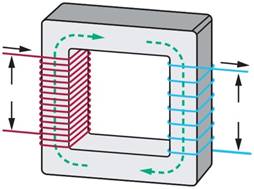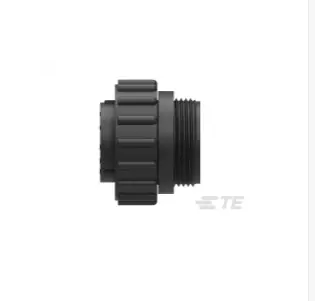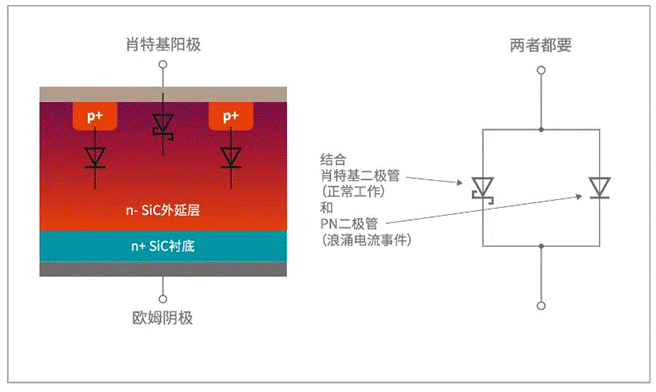开场白:
上一节在按键更改参数时,会呈现时刻短显着的数码管闪耀现象。这节通过教我们运用新式延时函数能够有用的改进闪耀现象。要教会我们三个知识点:
榜首个:怎么编写趁热打铁的守时器延时函数。
第二个:怎么编写查看EEPROM芯片是否存在短路,虚焊或许芯片坏了的监控程序。
第三个:通过网友“cjseng”的提示,我主张我们今后在用EEPROM芯片时,假如单片机IO口足够多,WP引脚应该专门接一个IO口,而且加一个上拉电阻,需求更改EEPROM存储数据时置低,其他任何一个时刻都置高,这样能够愈加有用地维护EEPROM内部数据不会被意外更改。
具体内容,请看源代码解说。
(1)硬件渠道:
依据朱兆祺51单片机学习板。旧版的朱兆祺51学习板在硬件上有一个bug,AT24C02的第8个引脚VCC悬空了!!!,读者记得把它飞线连接到5V电源处。新版的朱兆祺51学习板现已改正来了。
(2)完成功用:
4个被更改后的参数断电后不丢掉,数据能够保存,断电再上电后仍是上一次最新被修正的数据。假如AT24C02短路,虚焊,或许坏了,体系能够查看出来,而且蜂鸣器会间歇性鸣叫报警。按更改参数按键时,数码管比上一节大大降低了闪耀现象。
显现和独立按键部分依据第29节的程序来改编,用朱兆祺51单片机学习板中的S1,S5,S9作为独立按键。
一共有4个窗口。每个窗口显现一个参数。
第8,7,6,5位数码管显现当时窗口,P-1代表第1个窗口,P-2代表第2个窗口,P-3代表第3个窗口,P-4代表第1个窗口。
第4,3,2,1位数码管显现当时窗口被设置的参数。规模是从0到9999。S1是加按键,按下此按键会顺次添加当时窗口的参数。S5是减按键,按下此按键会顺次削减当时窗口的参数。S9是切换窗口按键,按下此按键会顺次循环切换不同的窗口。
(3)源代码解说如下:
- #include “REG52.H”
- #define const_voice_short40 //蜂鸣器短叫的持续时刻
- #define const_key_time120 //按键去颤动延时的时刻
- #define const_key_time220 //按键去颤动延时的时刻
- #define const_key_time320 //按键去颤动延时的时刻
- #define const_eeprom_1s 400 //大约1秒的时刻
- void initial_myself(void);
- void initial_peripheral(void);
- void delay_short(unsigned int uiDelayShort);
- void delay_long(unsigned int uiDelaylong);
- void delay_timer(unsigned int uiDelayTimerTemp); //趁热打铁的守时器延时方法
- //驱动数码管的74HC595
- void dig_hc595_drive(unsigned char ucDigStatusTemp16_09,unsigned char ucDigStatusTemp08_01);
- void display_drive(void); //显现数码管字模的驱动函数
- void display_service(void); //显现的窗口菜单服务程序
- //驱动LED的74HC595
- void hc595_drive(unsigned char ucLedStatusTemp16_09,unsigned char ucLedStatusTemp08_01);
- void start24(void);//开端位
- void ack24(void);//承认位
- void stop24(void);//中止位
- unsigned char read24(void);//读取一个字节的时序
- void write24(unsigned char dd); //发送一个字节的时序
- unsigned char read_eeprom(unsigned int address); //从一个地址读取出一个字节数据
- void write_eeprom(unsigned int address,unsigned char dd); //往一个地址存入一个字节数据
- unsigned int read_eeprom_int(unsigned int address); //从一个地址读取出一个int类型的数据
- void write_eeprom_int(unsigned int address,unsigned int uiWriteData); //往一个地址存入一个int类型的数据
- void T0_time(void);//守时中止函数
- void key_service(void); //按键服务的应用程序
- void key_scan(void);//按键扫描函数 放在守时中止里
- void eeprom_alarm_service(void); //EEPROM犯错报警
- sbit key_sr1=P0^0; //对应朱兆祺学习板的S1键
- sbit key_sr2=P0^1; //对应朱兆祺学习板的S5键
- sbit key_sr3=P0^2; //对应朱兆祺学习板的S9键
- sbit key_gnd_dr=P0^4; //模仿独立按键的地GND,因而有必要一向输出低电平
- sbit beep_dr=P2^7; //蜂鸣器的驱动IO口
- sbit eeprom_scl_dr=P3^7; //时钟线
- sbit eeprom_sda_dr_sr=P3^6; //数据的输出线和输入线
- sbit dig_hc595_sh_dr=P2^0; //数码管的74HC595程序
- sbit dig_hc595_st_dr=P2^1;
- sbit dig_hc595_ds_dr=P2^2;
- sbit hc595_sh_dr=P2^3; //LED灯的74HC595程序
- sbit hc595_st_dr=P2^4;
- sbit hc595_ds_dr=P2^5;
- unsigned char ucKeySec=0; //被触发的按键编号
- unsigned intuiKeyTimeCnt1=0; //按键去颤动延时计数器
- unsigned char ucKeyLock1=0; //按键触发后自锁的变量标志
- unsigned intuiKeyTimeCnt2=0; //按键去颤动延时计数器
- unsigned char ucKeyLock2=0; //按键触发后自锁的变量标志
- unsigned intuiKeyTimeCnt3=0; //按键去颤动延时计数器
- unsigned char ucKeyLock3=0; //按键触发后自锁的变量标志
- unsigned intuiVoiceCnt=0;//蜂鸣器鸣叫的持续时刻计数器
- unsigned charucVoiceLock=0;//蜂鸣器鸣叫的原子锁
- unsigned char ucDigShow8;//第8位数码管要显现的内容
- unsigned char ucDigShow7;//第7位数码管要显现的内容
- unsigned char ucDigShow6;//第6位数码管要显现的内容
- unsigned char ucDigShow5;//第5位数码管要显现的内容
- unsigned char ucDigShow4;//第4位数码管要显现的内容
- unsigned char ucDigShow3;//第3位数码管要显现的内容
- unsigned char ucDigShow2;//第2位数码管要显现的内容
- unsigned char ucDigShow1;//第1位数码管要显现的内容
- unsigned char ucDigDot8;//数码管8的小数点是否显现的标志
- unsigned char ucDigDot7;//数码管7的小数点是否显现的标志
- unsigned char ucDigDot6;//数码管6的小数点是否显现的标志
- unsigned char ucDigDot5;//数码管5的小数点是否显现的标志
- unsigned char ucDigDot4;//数码管4的小数点是否显现的标志
- unsigned char ucDigDot3;//数码管3的小数点是否显现的标志
- unsigned char ucDigDot2;//数码管2的小数点是否显现的标志
- unsigned char ucDigDot1;//数码管1的小数点是否显现的标志
- unsigned char ucDigShowTemp=0; //暂时中心变量
- unsigned char ucDisplayDriveStep=1;//动态扫描数码管的过程变量
- unsigned char ucWd1Update=1; //窗口1更新显现标志
- unsigned char ucWd2Update=0; //窗口2更新显现标志
- unsigned char ucWd3Update=0; //窗口3更新显现标志
- unsigned char ucWd4Update=0; //窗口4更新显现标志
- unsigned char ucWd=1;//本程序的中心变量,窗口显现变量。类似于一级菜单的变量。代表显现不同的窗口。
- unsigned intuiSetData1=0;//本程序中需求被设置的参数1
- unsigned intuiSetData2=0;//本程序中需求被设置的参数2
- unsigned intuiSetData3=0;//本程序中需求被设置的参数3
- unsigned intuiSetData4=0;//本程序中需求被设置的参数4
- unsigned char ucTemp1=0;//中心过渡变量
- unsigned char ucTemp2=0;//中心过渡变量
- unsigned char ucTemp3=0;//中心过渡变量
- unsigned char ucTemp4=0;//中心过渡变量
- unsigned char ucDelayTimerLock=0; //原子锁
- unsigned intuiDelayTimer=0;
- unsigned char ucCheckEeprom=0;//查看EEPROM芯片是否正常
- unsigned char ucEepromError=0; //EEPROM芯片是否正常的标志
- unsigned char ucEepromLock=0;//原子锁
- unsigned intuiEepromCnt=0; //间歇性蜂鸣器报警的计时器
- //依据原理图得出的共阴数码管字模表
- code unsigned char dig_table[]=
- {
- 0x3f,//0 序号0
- 0x06,//1 序号1
- 0x5b,//2 序号2
- 0x4f,//3 序号3
- 0x66,//4 序号4
- 0x6d,//5 序号5
- 0x7d,//6 序号6
- 0x07,//7 序号7
- 0x7f,//8 序号8
- 0x6f,//9 序号9
- 0x00,//无 序号10
- 0x40,//- 序号11
- 0x73,//P 序号12
- };
- void main()
- {
- initial_myself();
- delay_long(100);
- initial_peripheral();
- while(1)
- {
- key_service(); //按键服务的应用程序
- display_service(); //显现的窗口菜单服务程序
- eeprom_alarm_service(); //EEPROM犯错报警
- }
- }
- void eeprom_alarm_service(void) //EEPROM犯错报警
- {
- if(ucEepromError==1) //EEPROM犯错
- {
- if(uiEepromCnt
- {
- ucEepromLock=1;//原子锁加锁
- uiEepromCnt=0; //计时器清零
- ucEepromLock=0;//原子锁解锁
- ucVoiceLock=1;//原子锁加锁,维护主函数与中止函数的同享变量uiVoiceCnt
- uiVoiceCnt=const_voice_short; //蜂鸣器声响触发,滴一声就停。
- ucVoiceLock=0;//原子锁解锁,维护主函数与中止函数的同享变量uiVoiceCnt
- }
- }
- }
- //AT24C02驱动程序
- void start24(void)//开端位
- {
- eeprom_sda_dr_sr=1;
- eeprom_scl_dr=1;
- delay_short(15);
- eeprom_sda_dr_sr=0;
- delay_short(15);
- eeprom_scl_dr=0;
- }
- void ack24(void)//承认位时序
- {
- eeprom_sda_dr_sr=1; //51单片机在读取数据之前要先置一,表明数据输入
- eeprom_scl_dr=1;
- delay_short(15);
- eeprom_scl_dr=0;
- delay_short(15);
- //在本驱动程序中,我没有对ACK信号进行犯错判别,因为我这么多年一向都是这样用也没呈现过什么问题。
- //有爱好的朋友能够自己添加犯错判别,纷歧定非要按我的方法去做。
- }
- void stop24(void)//中止位
- {
- eeprom_sda_dr_sr=0;
- eeprom_scl_dr=1;
- delay_short(15);
- eeprom_sda_dr_sr=1;
- }
- unsigned char read24(void)//读取一个字节的时序
- {
- unsigned char outdata,tempdata;
- outdata=0;
- eeprom_sda_dr_sr=1; //51单片机的IO口在读取数据之前要先置一,表明数据输入
- delay_short(2);
- for(tempdata=0;tempdata<8;tempdata++)
- {
- eeprom_scl_dr=0;
- delay_short(2);
- eeprom_scl_dr=1;
- delay_short(2);
- outdata<<=1;
- if(eeprom_sda_dr_sr==1)outdata++;
- eeprom_sda_dr_sr=1; //51单片机的IO口在读取数据之前要先置一,表明数据输入
- delay_short(2);
- }
- return(outdata);
- }
- void write24(unsigned char dd) //发送一个字节的时序
- {
- unsigned char tempdata;
- for(tempdata=0;tempdata<8;tempdata++)
- {
- if(dd>=0x80)eeprom_sda_dr_sr=1;
- else eeprom_sda_dr_sr=0;
- dd<<=1;
- delay_short(2);
- eeprom_scl_dr=1;
- delay_short(4);
- eeprom_scl_dr=0;
- }
- }
- unsigned char read_eeprom(unsigned int address) //从一个地址读取出一个字节数据
- {
- unsigned char dd,cAddress;
- cAddress=address; //把低字节地址传递给一个字节变量。
- EA=0; //制止中止
- start24(); //IIC通讯开端
- write24(0xA0); //此字节包括读写指令和芯片地址两方面的内容。
- //指令为写指令。地址为”000″的信息,此信息由A0,A1,A2的引脚决议
- ack24(); //发送应对信号
- write24(cAddress); //发送读取的存储地址(规模是0至255)
- ack24(); //发送应对信号
- start24(); //开端
- write24(0xA1); //此字节包括读写指令和芯片地址两方面的内容。
- //指令为读指令。地址为”000″的信息,此信息由A0,A1,A2的引脚决议
- ack24(); //发送应对信号
- dd=read24(); //读取一个字节
- ack24(); //发送应对信号
- stop24();//中止
- EA=1; //答应中止
- delay_timer(2); //趁热打铁的守时器延时方法,在延时的时分还能够动态扫描数码管
- return(dd);
- }
- void write_eeprom(unsigned int address,unsigned char dd) //往一个地址存入一个字节数据
- {
- unsigned char cAddress;
- cAddress=address; //把低字节地址传递给一个字节变量。
- EA=0; //制止中止
- start24(); //IIC通讯开端
- write24(0xA0); //此字节包括读写指令和芯片地址两方面的内容。
- //指令为写指令。地址为”000″的信息,此信息由A0,A1,A2的引脚决议
- ack24(); //发送应对信号
- write24(cAddress); //发送写入的存储地址(规模是0至255)
- ack24(); //发送应对信号
- write24(dd);//写入存储的数据
- ack24(); //发送应对信号
- stop24();//中止
- EA=1; //答应中止
- delay_timer(4); //趁热打铁的守时器延时方法,在延时的时分还能够动态扫描数码管
- }
- unsigned int read_eeprom_int(unsigned int address) //从一个地址读取出一个int类型的数据
- {
- unsigned char ucReadDataH;
- unsigned char ucReadDataL;
- unsigned intuiReadDate;
- ucReadDataH=read_eeprom(address); //读取高字节
- ucReadDataL=read_eeprom(address+1);//读取低字节
- uiReadDate=ucReadDataH;//把两个字节合并成一个int类型数据
- uiReadDate=uiReadDate<<8;
- uiReadDate=uiReadDate+ucReadDataL;
- return uiReadDate;
- }
- void write_eeprom_int(unsigned int address,unsigned int uiWriteData) //往一个地址存入一个int类型的数据
- {
- unsigned char ucWriteDataH;
- unsigned char ucWriteDataL;
- ucWriteDataH=uiWriteData>>8;
- ucWriteDataL=uiWriteData;
- write_eeprom(address,ucWriteDataH); //存入高字节
- write_eeprom(address+1,ucWriteDataL); //存入低字节
- }
- void display_service(void) //显现的窗口菜单服务程序
- {
- switch(ucWd)//本程序的中心变量,窗口显现变量。类似于一级菜单的变量。代表显现不同的窗口。
- {
- case 1: //显现P–1窗口的数据
- if(ucWd1Update==1)//窗口1要悉数更新显现
- {
- ucWd1Update=0;//及时清零标志,防止一向进来扫描
- ucDigShow8=12;//第8位数码管显现P
- ucDigShow7=11;//第7位数码管显现-
- ucDigShow6=1; //第6位数码管显现1
- ucDigShow5=10;//第5位数码管显现无
- //先分化数据
- ucTemp4=uiSetData1/1000;
- ucTemp3=uiSetData1%1000/100;
- ucTemp2=uiSetData1%100/10;
- ucTemp1=uiSetData1%10;
- //再过渡需求显现的数据到缓冲变量里,让过渡的时刻越短越好
- if(uiSetData1<1000)
- {
- ucDigShow4=10;//假如小于1000,千位显现无
- }
- else
- {
- ucDigShow4=ucTemp4;//第4位数码管要显现的内容
- }
- if(uiSetData1<100)
- {
- ucDigShow3=10;//假如小于100,百位显现无
- }
- else
- {
- ucDigShow3=ucTemp3;//第3位数码管要显现的内容
- }
- if(uiSetData1<10)
- {
- ucDigShow2=10;//假如小于10,十位显现无
- }
- else
- {
- ucDigShow2=ucTemp2;//第2位数码管要显现的内容
- }
- ucDigShow1=ucTemp1;//第1位数码管要显现的内容
- }
- break;
- case 2://显现P–2窗口的数据
- if(ucWd2Update==1)//窗口2要悉数更新显现
- {
- ucWd2Update=0;//及时清零标志,防止一向进来扫描
- ucDigShow8=12;//第8位数码管显现P
- ucDigShow7=11;//第7位数码管显现-
- ucDigShow6=2;//第6位数码管显现2
- ucDigShow5=10; //第5位数码管显现无
- ucTemp4=uiSetData2/1000; //分化数据
- ucTemp3=uiSetData2%1000/100;
- ucTemp2=uiSetData2%100/10;
- ucTemp1=uiSetData2%10;
- if(uiSetData2<1000)
- {
- ucDigShow4=10;//假如小于1000,千位显现无
- }
- else
- {
- ucDigShow4=ucTemp4;//第4位数码管要显现的内容
- }
- if(uiSetData2<100)
- {
- ucDigShow3=10;//假如小于100,百位显现无
- }
- else
- {
- ucDigShow3=ucTemp3;//第3位数码管要显现的内容
- }
- if(uiSetData2<10)
- {
- ucDigShow2=10;//假如小于10,十位显现无
- }
- else
- {
- ucDigShow2=ucTemp2;//第2位数码管要显现的内容
- }
- ucDigShow1=ucTemp1;//第1位数码管要显现的内容
- }
- break;
- case 3://显现P–3窗口的数据
- if(ucWd3Update==1)//窗口3要悉数更新显现
- {
- ucWd3Update=0;//及时清零标志,防止一向进来扫描
- ucDigShow8=12;//第8位数码管显现P
- ucDigShow7=11;//第7位数码管显现-
- ucDigShow6=3;//第6位数码管显现3
- ucDigShow5=10; //第5位数码管显现无
- ucTemp4=uiSetData3/1000; //分化数据
- ucTemp3=uiSetData3%1000/100;
- ucTemp2=uiSetData3%100/10;
- ucTemp1=uiSetData3%10;
- if(uiSetData3<1000)
- {
- ucDigShow4=10;//假如小于1000,千位显现无
- }
- else
- {
- ucDigShow4=ucTemp4;//第4位数码管要显现的内容
- }
- if(uiSetData3<100)
- {
- ucDigShow3=10;//假如小于100,百位显现无
- }
- else
- {
- ucDigShow3=ucTemp3;//第3位数码管要显现的内容
- }
- if(uiSetData3<10)
- {
- ucDigShow2=10;//假如小于10,十位显现无
- }
- else
- {
- ucDigShow2=ucTemp2;//第2位数码管要显现的内容
- }
- ucDigShow1=ucTemp1;//第1位数码管要显现的内容
- }
- break;
- case 4://显现P–4窗口的数据
- if(ucWd4Update==1)//窗口4要悉数更新显现
- {
- ucWd4Update=0;//及时清零标志,防止一向进来扫描
- ucDigShow8=12;//第8位数码管显现P
- ucDigShow7=11;//第7位数码管显现-
- ucDigShow6=4;//第6位数码管显现4
- ucDigShow5=10; //第5位数码管显现无
- ucTemp4=uiSetData4/1000; //分化数据
- ucTemp3=uiSetData4%1000/100;
- ucTemp2=uiSetData4%100/10;
- ucTemp1=uiSetData4%10;
- if(uiSetData4<1000)
- {
- ucDigShow4=10;//假如小于1000,千位显现无
- }
- else
- {
- ucDigShow4=ucTemp4;//第4位数码管要显现的内容
- }
- if(uiSetData4<100)
- {
- ucDigShow3=10;//假如小于100,百位显现无
- }
- else
- {
- ucDigShow3=ucTemp3;//第3位数码管要显现的内容
- }
- if(uiSetData4<10)
- {
- ucDigShow2=10;//假如小于10,十位显现无
- }
- else
- {
- ucDigShow2=ucTemp2;//第2位数码管要显现的内容
- }
- ucDigShow1=ucTemp1;//第1位数码管要显现的内容
- }
- break;
- }
- }
- void key_scan(void)//按键扫描函数 放在守时中止里
- {
- if(key_sr1==1)//IO是高电平,阐明按键没有被按下,这时要及时清零一些标志位
- {
- ucKeyLock1=0; //按键自锁标志清零
- uiKeyTimeCnt1=0;//按键去颤动延时计数器清零,此行十分奇妙,是我实战中探索出来的。
- }
- else if(ucKeyLock1==0)//有按键按下,且是榜首次被按下
- {
- uiKeyTimeCnt1++; //累加守时中止次数
- if(uiKeyTimeCnt1>const_key_time1)
- {
- uiKeyTimeCnt1=0;
- ucKeyLock1=1;//自锁按键置位,防止一向触发
- ucKeySec=1; //触发1号键
- }
- }
- if(key_sr2==1)//IO是高电平,阐明按键没有被按下,这时要及时清零一些标志位
- {
- ucKeyLock2=0; //按键自锁标志清零
- uiKeyTimeCnt2=0;//按键去颤动延时计数器清零,此行十分奇妙,是我实战中探索出来的。
- }
- else if(ucKeyLock2==0)//有按键按下,且是榜首次被按下
- {
- uiKeyTimeCnt2++; //累加守时中止次数
- if(uiKeyTimeCnt2>const_key_time2)
- {
- uiKeyTimeCnt2=0;
- ucKeyLock2=1;//自锁按键置位,防止一向触发
- ucKeySec=2; //触发2号键
- }
- }
- if(key_sr3==1)//IO是高电平,阐明按键没有被按下,这时要及时清零一些标志位
- {
- ucKeyLock3=0; //按键自锁标志清零
- uiKeyTimeCnt3=0;//按键去颤动延时计数器清零,此行十分奇妙,是我实战中探索出来的。
- }
- else if(ucKeyLock3==0)//有按键按下,且是榜首次被按下
- {
- uiKeyTimeCnt3++; //累加守时中止次数
- if(uiKeyTimeCnt3>const_key_time3)
- {
- uiKeyTimeCnt3=0;
- ucKeyLock3=1;//自锁按键置位,防止一向触发
- ucKeySec=3; //触发3号键
- }
- }
- }
- void key_service(void) //按键服务的应用程序
- {
- switch(ucKeySec) //按键服务状况切换
- {
- case 1:// 加按键 对应朱兆祺学习板的S1键
- switch(ucWd)//在不同的窗口下,设置不同的参数
- {
- case 1:
- uiSetData1++;
- if(uiSetData1>9999) //最大值是9999
- {
- uiSetData1=9999;
- }
- write_eeprom_int(0,uiSetData1); //存入EEPROM 因为内部有延时函数,所以此处会引起数码管闪耀
- ucWd1Update=1;//窗口1更新显现
- break;
- case 2:
- uiSetData2++;
- if(uiSetData2>9999) //最大值是9999
- {
- uiSetData2=9999;
- }
- write_eeprom_int(2,uiSetData2); //存入EEPROM,因为内部有延时函数,所以此处会引起数码管闪耀
- ucWd2Update=1;//窗口2更新显现
- break;
- case 3:
- uiSetData3++;
- if(uiSetData3>9999) //最大值是9999
- {
- uiSetData3=9999;
- }
- write_eeprom_int(4,uiSetData3); //存入EEPROM,因为内部有延时函数,所以此处会引起数码管闪耀
- ucWd3Update=1;//窗口3更新显现
- break;
- case 4:
- uiSetData4++;
- if(uiSetData4>9999) //最大值是9999
- {
- uiSetData4=9999;
- }
- write_eeprom_int(6,uiSetData4); //存入EEPROM,因为内部有延时函数,所以此处会引起数码管闪耀
- ucWd4Update=1;//窗口4更新显现
- break;
- }
- ucVoiceLock=1;//原子锁加锁,维护主函数与中止函数的同享变量uiVoiceCnt
- uiVoiceCnt=const_voice_short; //按键声响触发,滴一声就停。
- ucVoiceLock=0;//原子锁解锁,维护主函数与中止函数的同享变量uiVoiceCnt
- ucKeySec=0;//呼应按键服务处理程序后,按键编号清零,防止共同触发
- break;
- case 2:// 减按键 对应朱兆祺学习板的S5键
- switch(ucWd)//在不同的窗口下,设置不同的参数
- {
- case 1:
- uiSetData1–;
- if(uiSetData1>9999)
- {
- uiSetData1=0;//最小值是0
- }
- write_eeprom_int(0,uiSetData1); //存入EEPROM,因为内部有延时函数,所以此处会引起数码管闪耀
- ucWd1Update=1;//窗口1更新显现
- break;
- case 2:
- uiSetData2–;
- if(uiSetData2>9999)
- {
- uiSetData2=0;//最小值是0
- }
- write_eeprom_int(2,uiSetData2); //存入EEPROM,因为内部有延时函数,所以此处会引起数码管闪耀
- ucWd2Update=1;//窗口2更新显现
- break;
- case 3:
- uiSetData3–;
- if(uiSetData3>9999)
- {
- uiSetData3=0;//最小值是0
- }
- write_eeprom_int(4,uiSetData3); //存入EEPROM,因为内部有延时函数,所以此处会引起数码管闪耀
- ucWd3Update=1;//窗口3更新显现
- break;
- case 4:
- uiSetData4–;
- if(uiSetData4>9999)
- {
- uiSetData4=0;//最小值是0
- }
- write_eeprom_int(6,uiSetData4); //存入EEPROM,因为内部有延时函数,所以此处会引起数码管闪耀
- ucWd4Update=1;//窗口4更新显现
- break;
- }
- ucVoiceLock=1;//原子锁加锁,维护主函数与中止函数的同享变量uiVoiceCnt
- uiVoiceCnt=const_voice_short; //按键声响触发,滴一声就停。
- ucVoiceLock=0;//原子锁解锁,维护主函数与中止函数的同享变量uiVoiceCnt
- ucKeySec=0;//呼应按键服务处理程序后,按键编号清零,防止共同触发
- break;
- case 3:// 切换窗口按键 对应朱兆祺学习板的S9键
- ucWd++;//切换窗口
- if(ucWd>4)
- {
- ucWd=1;
- }
- switch(ucWd)//在不同的窗口下,在不同的窗口下,更新显现不同的窗口
- {
- case 1:
- ucWd1Update=1;//窗口1更新显现
- break;
- case 2:
- ucWd2Update=1;//窗口2更新显现
- break;
- case 3:
- ucWd3Update=1;//窗口3更新显现
- break;
- case 4:
- ucWd4Update=1;//窗口4更新显现
- break;
- }
- ucVoiceLock=1;//原子锁加锁,维护主函数与中止函数的同享变量uiVoiceCnt
- uiVoiceCnt=const_voice_short; //按键声响触发,滴一声就停。
- ucVoiceLock=0;//原子锁解锁,维护主函数与中止函数的同享变量uiVoiceCnt
- ucKeySec=0;//呼应按键服务处理程序后,按键编号清零,防止共同触发
- break;
- }
- }
- void display_drive(void)
- {
- //以下程序,假如加一些数组和移位的元素,还能够紧缩容量。可是鸿哥寻求的不是容量,而是明晰的解说思路
- switch(ucDisplayDriveStep)
- {
- case 1://显现第1位
- ucDigShowTemp=dig_table[ucDigShow1];
- if(ucDigDot1==1)
- {
- ucDigShowTemp=ucDigShowTemp|0x80;//显现小数点
- }
- dig_hc595_drive(ucDigShowTemp,0xfe);
- break;
- case 2://显现第2位
- ucDigShowTemp=dig_table[ucDigShow2];
- if(ucDigDot2==1)
- {
- ucDigShowTemp=ucDigShowTemp|0x80;//显现小数点
- }
- dig_hc595_drive(ucDigShowTemp,0xfd);
- break;
- case 3://显现第3位
- ucDigShowTemp=dig_table[ucDigShow3];
- if(ucDigDot3==1)
- {
- ucDigShowTemp=ucDigShowTemp|0x80;//显现小数点
- }
- dig_hc595_drive(ucDigShowTemp,0xfb);
- break;
- case 4://显现第4位
- ucDigShowTemp=dig_table[ucDigShow4];
- if(ucDigDot4==1)
- {
- ucDigShowTemp=ucDigShowTemp|0x80;//显现小数点
- }
- dig_hc595_drive(ucDigShowTemp,0xf7);
- break;
- case 5://显现第5位
- ucDigShowTemp=dig_table[ucDigShow5];
- if(ucDigDot5==1)
- {
- ucDigShowTemp=ucDigShowTemp|0x80;//显现小数点
- }
- dig_hc595_drive(ucDigShowTemp,0xef);
- break;
- case 6://显现第6位
- ucDigShowTemp=dig_table[ucDigShow6];
- if(ucDigDot6==1)
- {
- ucDigShowTemp=ucDigShowTemp|0x80;//显现小数点
- }
- dig_hc595_drive(ucDigShowTemp,0xdf);
- break;
- case 7://显现第7位
- ucDigShowTemp=dig_table[ucDigShow7];
- if(ucDigDot7==1)
- {
- ucDigShowTemp=ucDigShowTemp|0x80;//显现小数点
- }
- dig_hc595_drive(ucDigShowTemp,0xbf);
- break;
- case 8://显现第8位
- ucDigShowTemp=dig_table[ucDigShow8];
- if(ucDigDot8==1)
- {
- ucDigShowTemp=ucDigShowTemp|0x80;//显现小数点
- }
- dig_hc595_drive(ucDigShowTemp,0x7f);
- break;
- }
- ucDisplayDriveStep++;
- if(ucDisplayDriveStep>8)//扫描完8个数码管后,从头从榜首个开端扫描
- {
- ucDisplayDriveStep=1;
- }
- }
- //数码管的74HC595驱动函数
- void dig_hc595_drive(unsigned char ucDigStatusTemp16_09,unsigned char ucDigStatusTemp08_01)
- {
- unsigned char i;
- unsigned char ucTempData;
- dig_hc595_sh_dr=0;
- dig_hc595_st_dr=0;
- ucTempData=ucDigStatusTemp16_09;//先送高8位
- for(i=0;i<8;i++)
- {
- if(ucTempData>=0x80)dig_hc595_ds_dr=1;
- else dig_hc595_ds_dr=0;
- dig_hc595_sh_dr=0; //SH引脚的上升沿把数据送入寄存器
- delay_short(1);
- dig_hc595_sh_dr=1;
- delay_short(1);
- ucTempData=ucTempData<<1;
- }
- ucTempData=ucDigStatusTemp08_01;//再先送低8位
- for(i=0;i<8;i++)
- {
- if(ucTempData>=0x80)dig_hc595_ds_dr=1;
- else dig_hc595_ds_dr=0;
- dig_hc595_sh_dr=0; //SH引脚的上升沿把数据送入寄存器
- delay_short(1);
- dig_hc595_sh_dr=1;
- delay_short(1);
- ucTempData=ucTempData<<1;
- }
- dig_hc595_st_dr=0;//ST引脚把两个寄存器的数据更新输出到74HC595的输出引脚上而且锁存起来
- delay_short(1);
- dig_hc595_st_dr=1;
- delay_short(1);
- dig_hc595_sh_dr=0; //拉低,抗干扰就增强
- dig_hc595_st_dr=0;
- dig_hc595_ds_dr=0;
- }
- //LED灯的74HC595驱动函数
- void hc595_drive(unsigned char ucLedStatusTemp16_09,unsigned char ucLedStatusTemp08_01)
- {
- unsigned char i;
- unsigned char ucTempData;
- hc595_sh_dr=0;
- hc595_st_dr=0;
- ucTempData=ucLedStatusTemp16_09;//先送高8位
- for(i=0;i<8;i++)
- {
- if(ucTempData>=0x80)hc595_ds_dr=1;
- else hc595_ds_dr=0;
- hc595_sh_dr=0; //SH引脚的上升沿把数据送入寄存器
- delay_short(1);
- hc595_sh_dr=1;
- delay_short(1);
- ucTempData=ucTempData<<1;
- }
- ucTempData=ucLedStatusTemp08_01;//再先送低8位
- for(i=0;i<8;i++)
- {
- if(ucTempData>=0x80)hc595_ds_dr=1;
- else hc595_ds_dr=0;
- hc595_sh_dr=0; //SH引脚的上升沿把数据送入寄存器
- delay_short(1);
- hc595_sh_dr=1;
- delay_short(1);
- ucTempData=ucTempData<<1;
- }
- hc595_st_dr=0;//ST引脚把两个寄存器的数据更新输出到74HC595的输出引脚上而且锁存起来
- delay_short(1);
- hc595_st_dr=1;
- delay_short(1);
- hc595_sh_dr=0; //拉低,抗干扰就增强
- hc595_st_dr=0;
- hc595_ds_dr=0;
- }
- void T0_time(void) interrupt 1 //守时中止
- {
- TF0=0;//铲除中止标志
- TR0=0; //关中止
- if(ucVoiceLock==0) //原子锁判别
- {
- if(uiVoiceCnt!=0)
- {
- uiVoiceCnt–; //每次进入守时中止都自减1,直到等于零中止。才中止鸣叫
- beep_dr=0;//蜂鸣器是PNP三极管操控,低电平就开端鸣叫。
- }
- else
- {
- ; //此处多加一个空指令,想保持跟if括号句子的数量对称,都是两条指令。不加也能够。
- beep_dr=1;//蜂鸣器是PNP三极管操控,高电平就中止鸣叫。
- }
- }
- if(ucDelayTimerLock==0) //原子锁判别
- {
- if(uiDelayTimer>0)
- {
- uiDelayTimer–; //趁热打铁的守时器延时方法的计时器
- }
- }
- if(ucEepromError==1) //EEPROM犯错
- {
- if(ucEepromLock==0)//原子锁判别
- {
- uiEepromCnt++;//间歇性蜂鸣器报警的计时器
- }
- }
- key_scan(); //按键扫描函数
- display_drive();//数码管字模的驱动函数
- TH0=0xfe; //重装初始值(65535-500)=65035=0xfe0b
- TL0=0x0b;
- TR0=1;//开中止
- }
- void delay_short(unsigned int uiDelayShort)
- {
- unsigned int i;
- for(i=0;i
- {
- ; //一个分号相当于履行一条空句子
- }
- }
- void delay_long(unsigned int uiDelayLong)
- {
- unsigned int i;
- unsigned int j;
- for(i=0;i
- {
- for(j=0;j<500;j++)//内嵌循环的空指令数量
- {
- ; //一个分号相当于履行一条空句子
- }
- }
- }
- void delay_timer(unsigned int uiDelayTimerTemp)
- {
- ucDelayTimerLock=1; //原子锁加锁
- uiDelayTimer=uiDelayTimerTemp;
- ucDelayTimerLock=0; //原子锁解锁
- /* 注释一:
- *延时等候,一向比及守时中止把它减到0中止.这种趁热打铁的守时器方法,
- *能够在延时的时分动态扫描数码管,改进数码管的闪耀现象
- */
- while(uiDelayTimer!=0);//趁热打铁的守时器方法延时等候
- }
- void initial_myself(void)//榜首区 初始化单片机
- {
- key_gnd_dr=0; //模仿独立按键的地GND,因而有必要一向输出低电平
- beep_dr=1; //用PNP三极管操控蜂鸣器,输出高电平时不叫。
- hc595_drive(0x00,0x00);//封闭一切通过别的两个74HC595驱动的LED灯
- TMOD=0x01;//设置守时器0为作业方法1
- TH0=0xfe; //重装初始值(65535-500)=65035=0xfe0b
- TL0=0x0b;
- }
- void initial_peripheral(void) //第二区 初始化外围
- {
- ucDigDot8=0; //小数点悉数不显现
- ucDigDot7=0;
- ucDigDot6=0;
- ucDigDot5=0;
- ucDigDot4=0;
- ucDigDot3=0;
- ucDigDot2=0;
- ucDigDot1=0;
- EA=1; //开总中止
- ET0=1; //答应守时中止
- TR0=1; //发动守时中止
- /* 注释二:
- * 查看AT24C02芯片是否存在短路,虚焊,芯片坏了等不作业现象。
- * 在一个特定的地址里把数据读出来,假如发现不等于0x5a,则从头写入0x5a,再读出来
- * 判别是不是等于0x5a,假如不相等,则芯片有问题,犯错报警提示。
- */
- ucCheckEeprom=read_eeprom(254); //判别AT24C02是否正常
- if(ucCheckEeprom!=0x5a)//假如不等于特定内容。则从头写入数据再判别一次
- {
- write_eeprom(254,0x5a);//从头写入标志数据
- ucCheckEeprom=read_eeprom(254); //判别AT24C02是否正常
- if(ucCheckEeprom!=0x5a)//假如仍是不等于特定数字,则芯片不正常
- {
- ucEepromError=1;//表明AT24C02芯片犯错报警
- }
- }
- uiSetData1=read_eeprom_int(0);//读取uiSetData1,内部占用2个字节地址
- if(uiSetData1>9999) //不在规模内
- {
- uiSetData1=0; //填入一个初始化数据
- write_eeprom_int(0,uiSetData1); //存入uiSetData1,内部占用2个字节地址
- }
- uiSetData2=read_eeprom_int(2);//读取uiSetData2,内部占用2个字节地址
- if(uiSetData2>9999)//不在规模内
- {
- uiSetData2=0;//填入一个初始化数据
- write_eeprom_int(2,uiSetData2); //存入uiSetData2,内部占用2个字节地址
- }
- uiSetData3=read_eeprom_int(4);//读取uiSetData3,内部占用2个字节地址
- if(uiSetData3>9999)//不在规模内
- {
- uiSetData3=0;//填入一个初始化数据
- write_eeprom_int(4,uiSetData3); //存入uiSetData3,内部占用2个字节地址
- }
- uiSetData4=read_eeprom_int(6);//读取uiSetData4,内部占用2个字节地址
- if(uiSetData4>9999)//不在规模内
- {
- uiSetData4=0;//填入一个初始化数据
- write_eeprom_int(6,uiSetData4); //存入uiSetData4,内部占用2个字节地址
- }
- }
总结陈词:
下一节开端讲关于单片机驱动实时时钟芯片的内容,欲知概况,请听下回分化—–使用DS1302做一个实时时钟。









